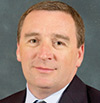Safety Leadership: Casting a safety shadow
Editor’s Note: Achieving and sustaining an injury-free workplace demands strong leadership. Throughout 2014, experts from Ojai, CA-based consulting firm BST will share their point of view on what leaders need to know to guide their organizations to safety excellence.
As safety leaders, we focus on helping our organizations become and stay safe. We strive to understand the exposures employees face and find ways of systematically reducing them. We pride ourselves on building cultures that won’t tolerate risk, and developing leaders who carry that mission forward every day.
That work has paid off.
Today, you are more likely to be injured working in a hospital than you are in a mine.
But as the National Safety Council’s National Safety Month highlights, our employees face many more hazards than just those “inside the gates.”
Consider that for every 4,000 workplace fatalities in the United States, 120,000 preventable deaths occur outside the workplace.
Accidents and injuries on the road and in our homes are an ever-present danger for employees and their families. As safety leaders, we have an obligation to do more. We need to take safety home.
Your safety legacy
Just as at work, we can’t be there every time our employees, friends or family members make decisions that affect their exposure to risk. But we can say and do things that leave a lasting impression – a legacy – that influences how they navigate risk.
My driving instructor was named Wilf Earlam. In addition to the basics of driving, Wilf continually threw out scenarios I might face and asked what I would do: blown tires on a busy highway, erratic drivers, poor weather conditions, and so on.
One day Wilf challenged me in a way I would never forget. He said, “Colin, at some stage, someone is going to comment on your driving. What are you going to do? How will you react?” He pointed out to me that “When you’re at the wheel, you’re the captain of the vessel. Never let anyone tell you how to conduct your vessel.”
Six months later, I had my license and was driving a group of friends on a nice summer day. We were on a winding road doing about 40 mph in a 60 mph zone when one of the girls commented on my “slow” driving and told me to speed up.
Contrary to probably every instinct a 17-year-old boy has, I did not speed up. Why? Because Wilf helped me think about how to handle the scenario. He prepared me. That was the shadow that Wilf had cast on my driving. He understood that his job wasn’t merely teaching me how to drive; it was to equip me to make smart, safe decisions on my own.
Here are some ways you can cast a big safety shadow:
- Help people see risk. It can be easy to rationalize risks at home or on the road – if we even see them as risks at all. Be obsessive about risk in the conversations you have with friends and family. Create a healthy paranoia about the dangers present in everyday tasks; help others see the unseen and predict the unexpected. Use these conversations as opportunities to share the problem-solving techniques you’ve learned.
- Model safe behaviors. Setting an example is powerful. When we demonstrate safe driving behaviors, we show our kids more about responsible driving than any lecture ever could. When we wear protective equipment for work around the house – or a bike ride around the block – we provide a model of how to control exposure for ourselves and others.
- Meet people where they are. Just as important as what we do is how we do it. Our goal is to coach, lead and inspire our friends, family and co-workers – not lecture them. Focus on starting conversations, asking questions and listening.
Casting a safety shadow is quiet work. It’s usually done one person at a time, as Wilf did with me. But spread that work over the 25-50 people you would count as close friends and family, who in turn each have their own circle of friends, family and co-workers – and the simple act of one conversation, one safe behavior modeled, can become the lifesaving difference in countless decisions around risk. That’s a difference worth making. It’s the safety legacy we can all leave behind.
 Colin Duncan is CEO of DEKRA Insight, a global consulting firm offering safety advice and expertise in process and organizational safety through its two operations, Chilworth and BST.
Colin Duncan is CEO of DEKRA Insight, a global consulting firm offering safety advice and expertise in process and organizational safety through its two operations, Chilworth and BST.
Post a comment to this article
Safety+Health welcomes comments that promote respectful dialogue. Please stay on topic. Comments that contain personal attacks, profanity or abusive language – or those aggressively promoting products or services – will be removed. We reserve the right to determine which comments violate our comment policy. (Anonymous comments are welcome; merely skip the “name” field in the comment box. An email address is required but will not be included with your comment.)

